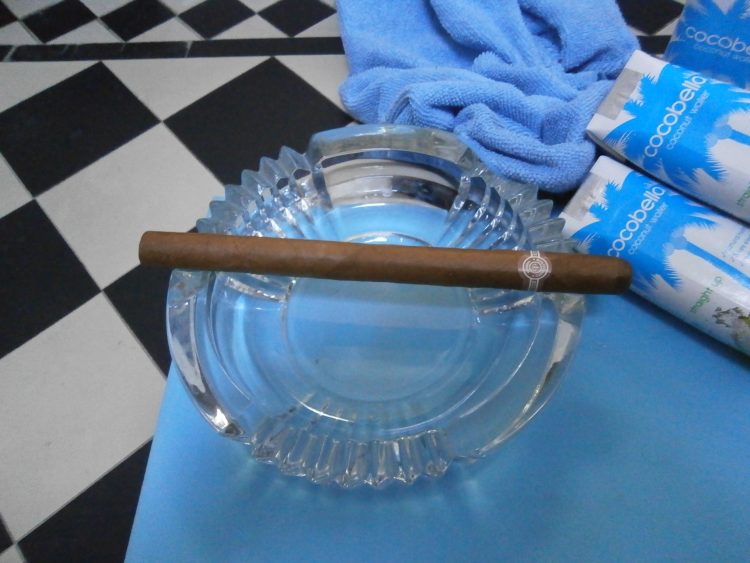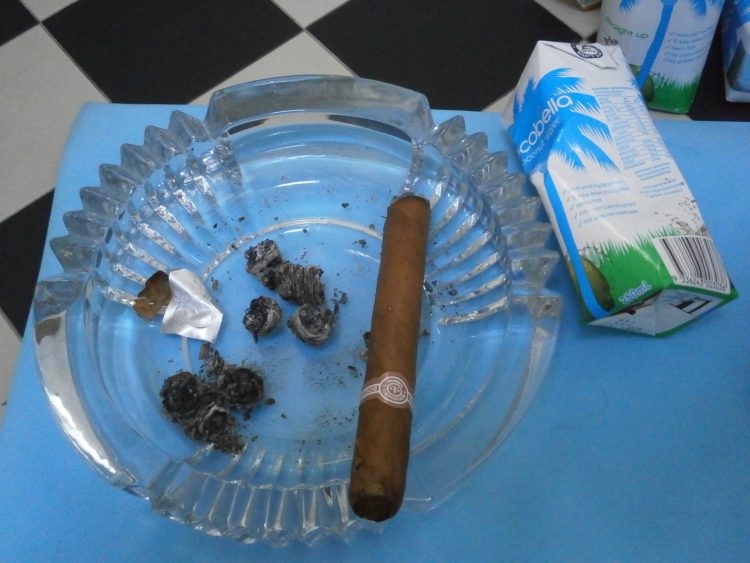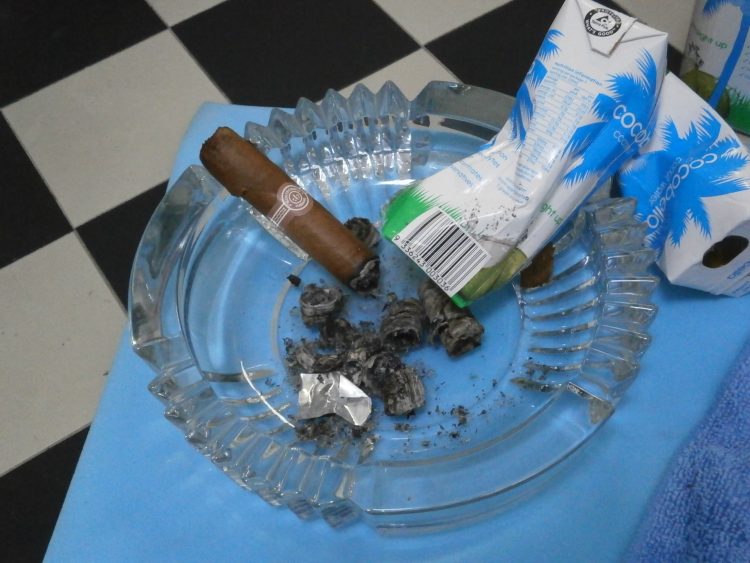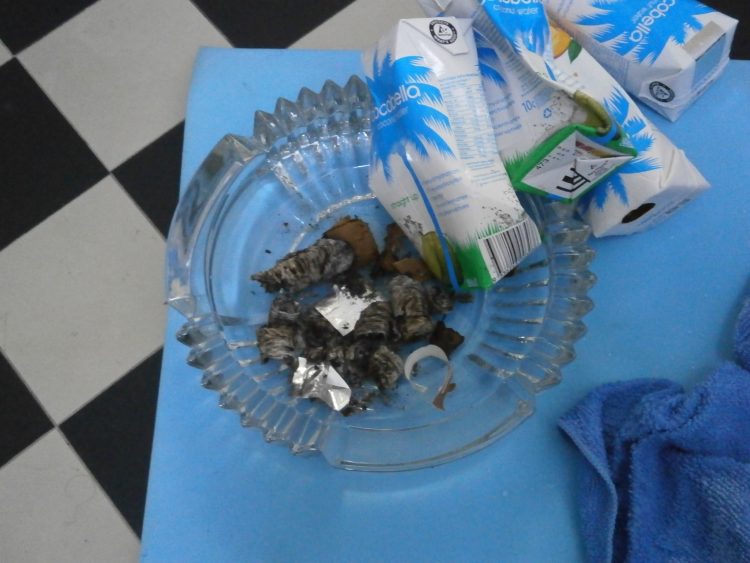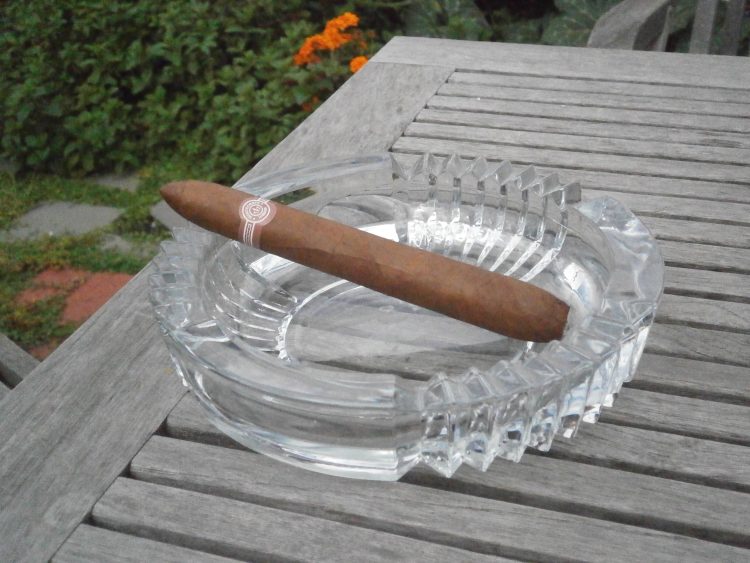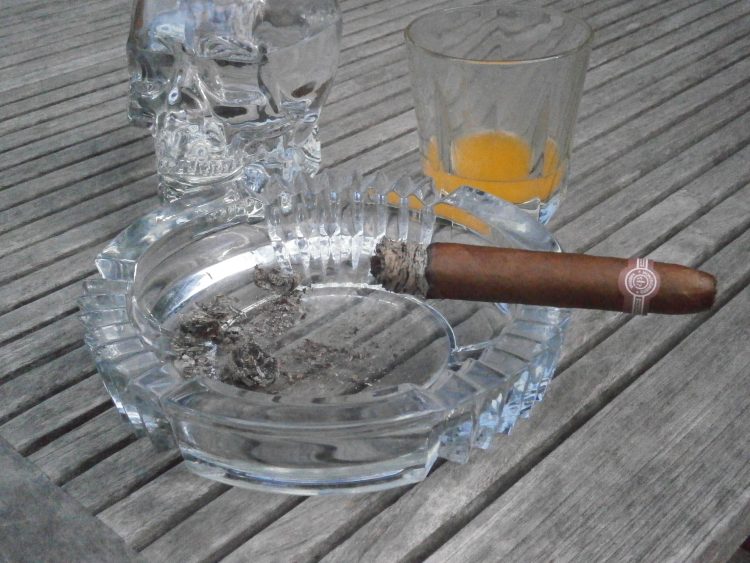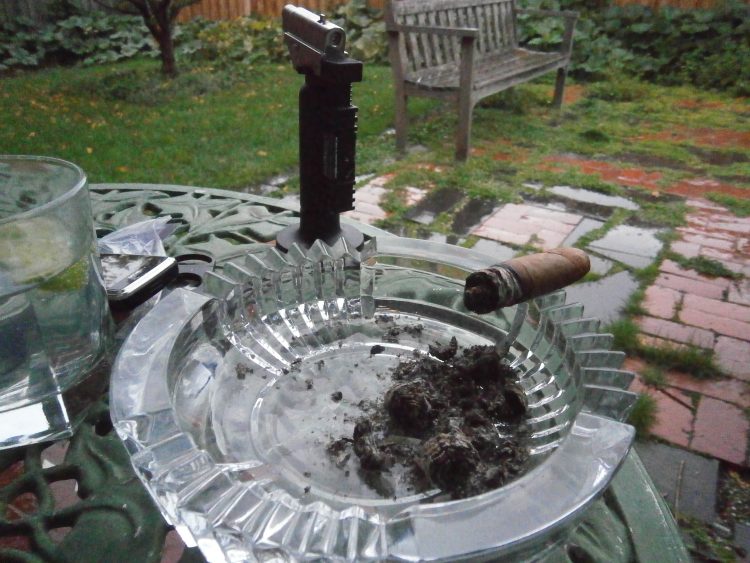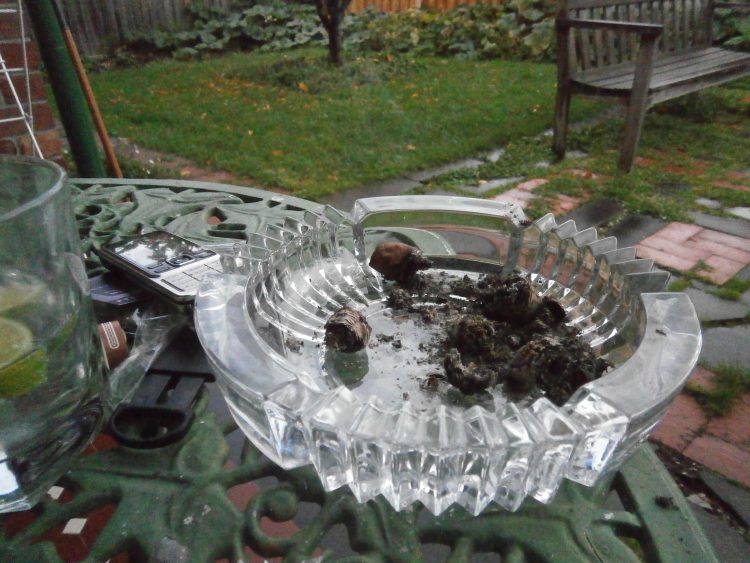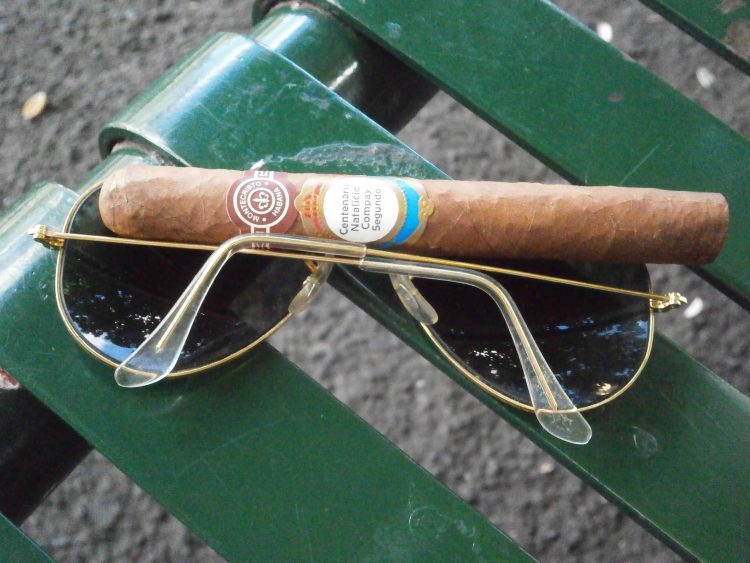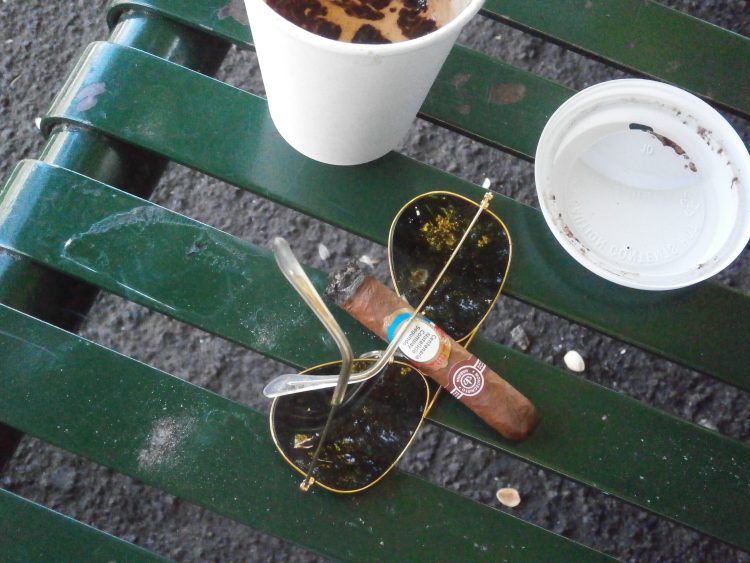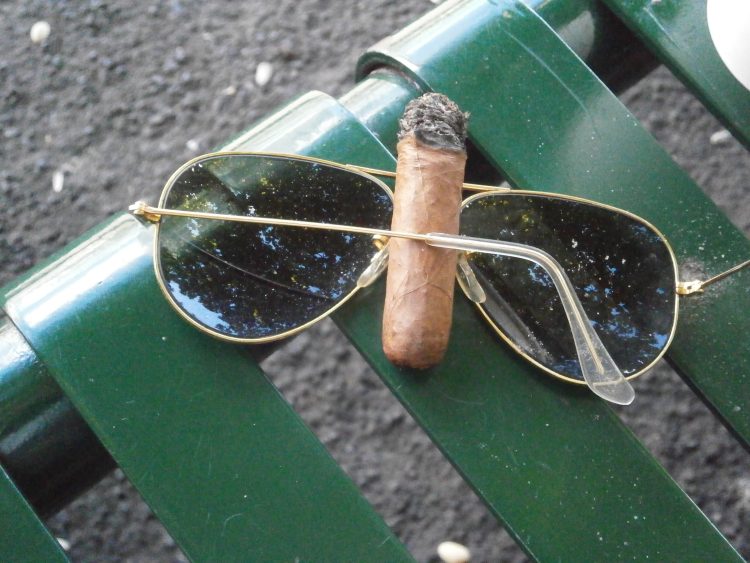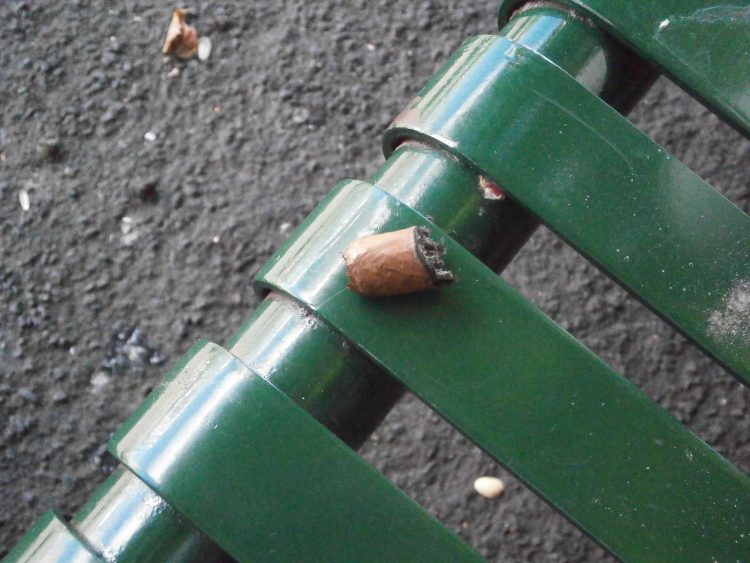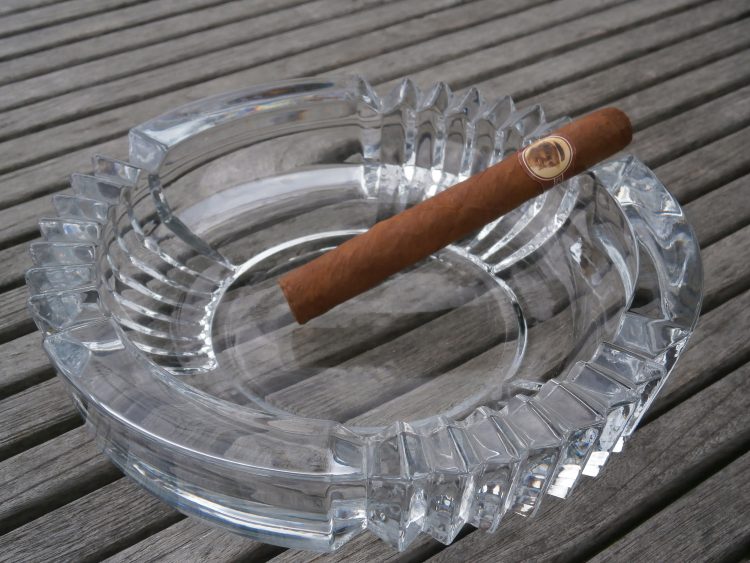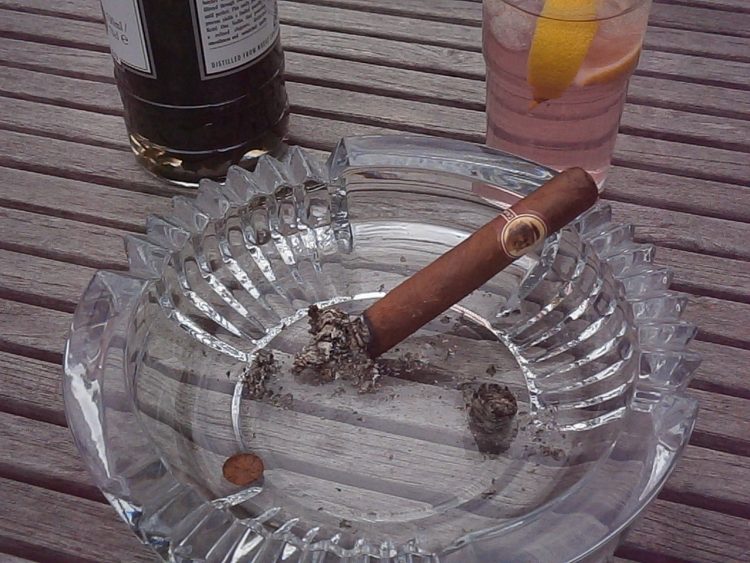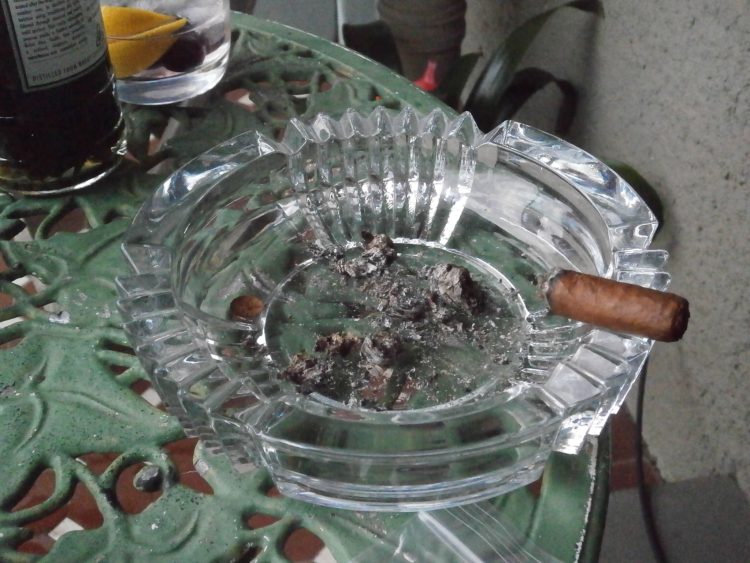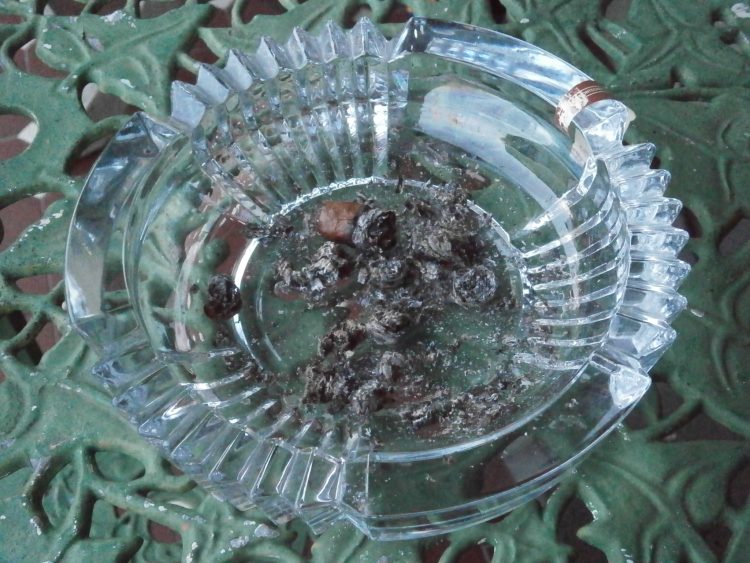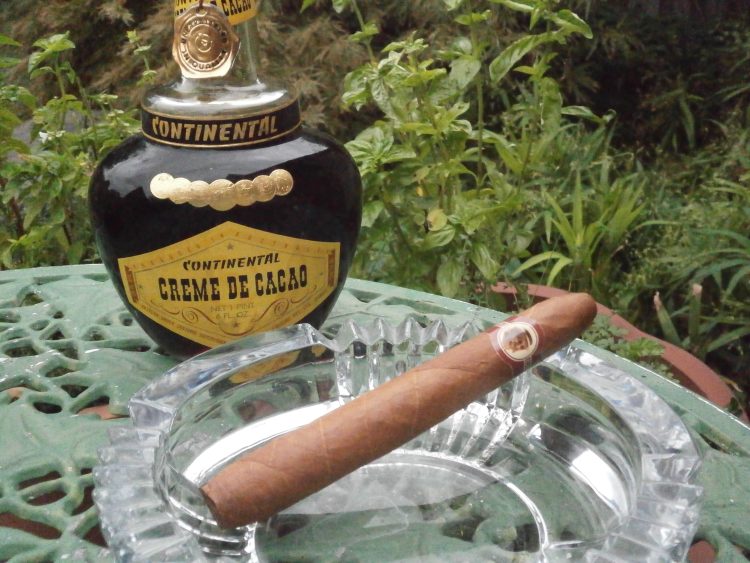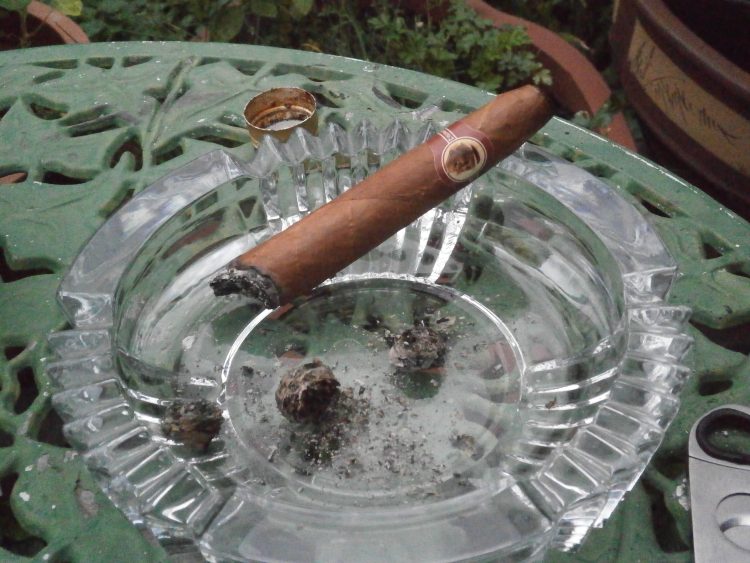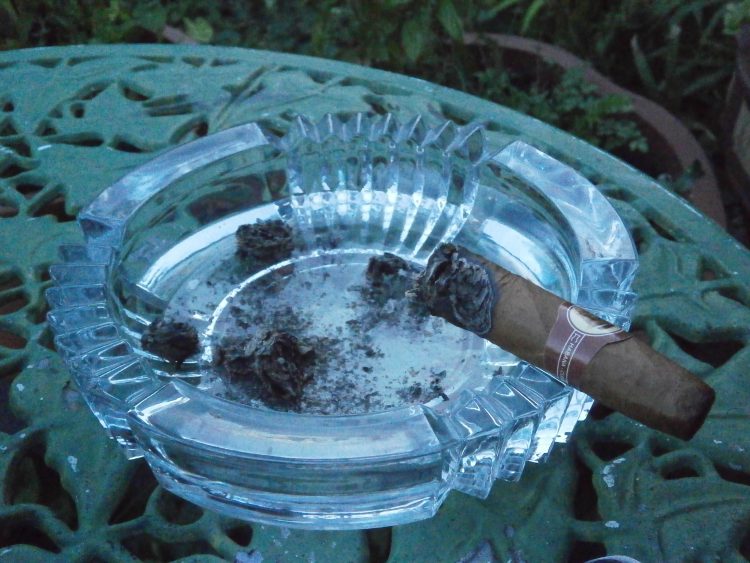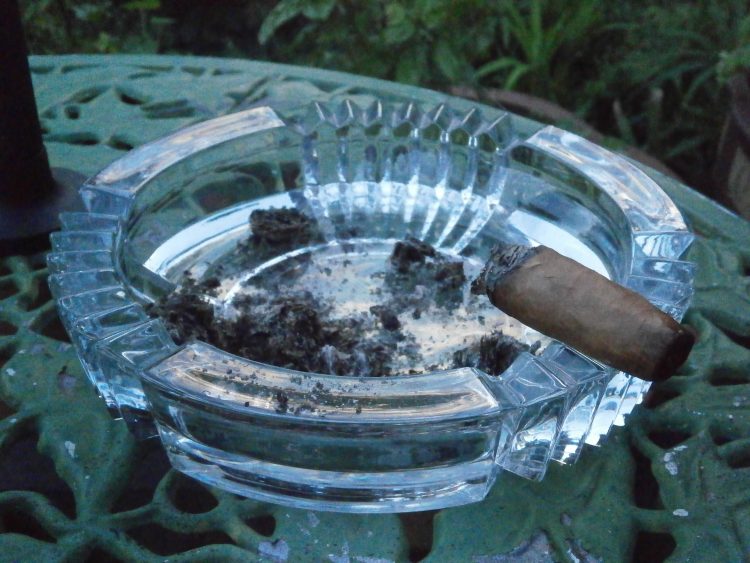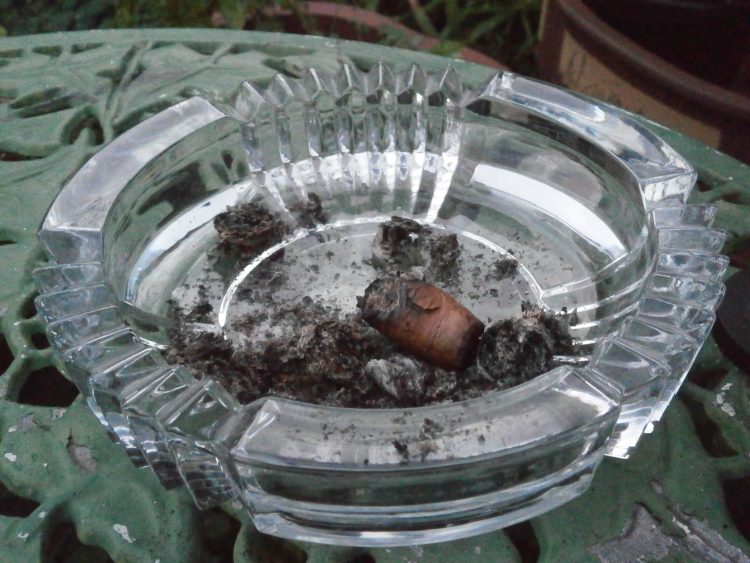Here’s a question: have we learnt anything from five centuries of European tobacco? Do the smokers of today, with the benefit of our computers, of our collective hive consciousness, of our advanced theories of knowledge; do we enjoy the combustion of fragrant leaf any more than did our long expired predecessors?
What was the last real development in cigar smoking? The rinsing technique? (more on that later). Is anyone out there working to develop our hobby? What giant’s shoulders will the smokers of tomorrow stand upon, when trying to discover the perfect path to nicotine nirvana? Is anybody working on this?
Well yes. I am. In this edition of A Harem of Dusky Beauties we are going to go on a journey of discovery. This is real science here people. Or real hokum, I suppose, depending on your perspective. Today we’re taking cigars tantric.
My subject is the Montecristo A from the aforementioned Montecristo Humidor (as long a cigar as Cuba rolls; if I can’t find enlightenment within its four or so hours, then no cigar contains it). The setting is a small, sealed room (a bathroom, if I’m honest). I have heated it to 40°C, and unrolled a simple yoga mat, and over the stereo I play a gentle melody of pan-pipes and forest sounds. At the head of the mat I place my ashtray, my sweat towel and several cartons of coconut water.
Before I light the cigar I bring my head down to the floor in the Child’s Pose and relax. I breath deep, in and out, slowing my heartbeat to the rhythm of the earth. I clear my mind of my day to day concerns and focus on my intention for the session.
In Sanskrit the literal meaning of yoga is to join or unite, and so I hope to unite yoga with the world of Cuban cigar aficionadoism. The Cuban cigar is the most natural product in the world: its tobacco is grown by peasant farmers without fertilisers or pesticides; it is harvested by the calloused hands of itinerant labourers; it is dried in ancient wooden barns, before being transported to Havana by horse-cart where it is rolled into a cigar using nothing more than the hard thigh of a dusky virgin. A Cuban cigar is a totally natural relaxant that promotes meditation, and stimulates the mind and body! What better match than cigars and yoga! Lord knows the average cigar aficionado could use some toning up.
Rising from my meditation I light the cigar and work the floor, opening up my arms and legs, hinging from the hips and bowing into a forward fold. My awareness of my body begins to grow, as I practice my ujjayi breathing, deep breaths from the diaphragm, regular to my movement. I come to all fours and raise my hips up into Downward Facing Dog, holding the pose, stretching out my back, my spine, before bringing it down through a vinyasa and into a sun salute. I inhale, very light tobacco, notes of cedar, a little cream, and then hold the breath as I go back through the stretch, letting the smoke cool in my mouth before exhaling through the nose. I go through the exercise for several more tokes before kicking the right leg high, my weight over my heart centre. I feel it beat with the rhythm of my breath; I feel it beat with the rhythm of the Montecristo A.
Forty five minutes in, and it’s so fucking hot in this room. When I’m upright sweat sticks in the hair on my legs; when inverted it runs down my arms and face, and I have to wipe it away before each new puff on the cigar. Sweat is good, sweat cleanses, but it’s no fun producing it. Taking a moment’s break in the lotus position I mop my forehead with the towel and take a drink from my coconut water. The cigar has thickened up, medium tobacco now, strong cedar and floral with a little honey. The coconut water is a perfect complement, just enough flavour to clear the pallet, but light enough that it dissipates instantly, leaving nothing to effect the flavour of the leaf.
I work the legs, lunges and warrior poses, always returning with the breath to the Down Dog and the inhalation. I move through the balance poses, keeping the cigar in my mouth or hand, an extension of my body, an insectoid feeler that aids in finding my centre and adds extra height to my Ardha Chandrasana, my Moon Salute. Nine inches is a lot of tar to filter out, and toward the end the cigar grows very bitter, but never loses its class; every puff has been wonderfully refined, absolutely top quality tobacco.
After three and a quarter hours I lay the nub down in the ash tray and return to the child’s pose, my forehead on the mat. The cigar is utterly spent, and so am I. I feel my heart slow, then stop. My body begins to melt, forming tendrils that ease their way through the soft foam of the mat and down into the floor, finding the cracks in the tiles, moving between the grains in the cement slab, and then down into the dry earth. They weave around pipes, around bones, around rubbish and the remnants of prior civilizations, making their way into the bedrock. I move under the vast bulk of the Himalayas, the Andes; under the cool weight of the oceans, past laval vents and whale drops; past tectonic rifts and continental shelf. After a time I feel a tug, and my tendrils entwine with those of another. She embraces me and pulls me up, up toward a small island in the Caribbean, up toward a sheltered valley named Vuelta Abajo. I burst from the earth, strong and green, a crown upon my head. I flex my broad leaves up, reaching, saluting the sun, my every limb extended to its limit, basking in the radiant glow. I drink in the sun’s energy and feel its power within myself, storing it as fragrant aroma and humming nicotine. A warm tropical breeze sweeps across the valley floor, and my leaves join in the murmur of the leaves of a million of my sisters as we gently sway singing the song of the fields.
I am happy.
I awake with a start. A shiver runs down my spine. Hours have passed. The heater globe has gone out, and I lie in the dark on the cold, sweat-damp mat, my entire body stiff and aching. I stagger up and stare at my haggard face in the mirror, dark lines and crow’s feet, the speckled print of the yoga mat impressed upon my cheek. I reach out and touch the cold, dead glass. Is this all there is?
The Montecristo A from the Montecristo Humidor. Better than a Monte 4.
Montecristo A Montecristo Humidor on the Cuban Cigar Website.
